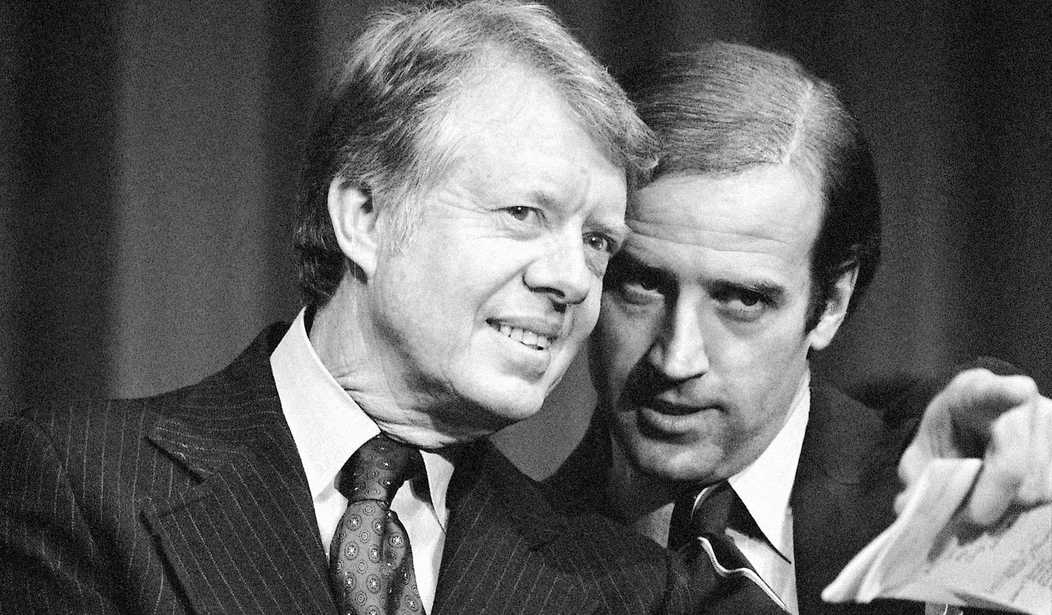Brace yourself for ’70s-style stagflation: Wall Street’s key recession indicator is flashing, “Danger, Jimmy Carter! Danger!”
It didn’t make big headlines in the Complicit Media, but the bond yield curve inverted on Monday.
Inversion is when bond yields go higher in the short term compared to long-term bonds, the reverse of how bonds are usually traded. That’s because investors predict higher (and probably recessionary) interest rates coming from the Fed. Sure enough, word leaked late Monday that the Fed will likely raise rates by .75 points Wednesday afternoon. That hike would come on top of a 0.25% hike in March and a bigger 0.5% move in May.
The Fed hasn’t made a one-time increase of .75 in almost 30 years. Bond inversions have correctly predicted every recession but one since 1955.
So why are we looking at the possibility of stagflation instead of an ordinary recession?
The word “stagflation” wasn’t coined until the 1970s. According to textbook economics, it wasn’t possible to have inflation in a slow or shrinking economy. Inflation happens when the money supply expands faster than the economy as a whole, and everybody goes out chasing those excess dollars: Hiring, buying, selling. It wasn’t possible to have inflation without an overheated economy, the old textbooks said.
Textbook economics didn’t account for the sheer dumbassery enabled by a federal government hellbent on micromanagement and untethered from the gold standard.
Starting with President Nixon’s right-wing progressivism, the 1970s brought us a massive explosion in federal regulations, strangling productivity gains and growth. Nixon also took us off the gold standard, greatly reducing the value of the dollar. A lenient Fed cooperated with all this destructive nonsense and tried to keep the economy burning with an easy-money policy.
The Fed would sometimes jack rates sky high, but never for long enough to wring inflation out of the economy — just long enough to trigger a recession or two.
The result was the impossible: High inflation and low growth.
“Stagnation and inflation aren’t supposed to coincide like this!” said the first economist. “What do we call it?”
“Stagflation, I guess,” said the second economist.
Thanks to the current president and the previous one, plus two Democratic congresses, Washington has injected Six. Trillion. Dollars of inflationary funny-money into an economy reeling from lockdowns, supply chain breakdowns, drought, and a major land war in Europe. Compounding the errors, Presidentish Joe Biden put a chokehold on domestic energy production, undid President Trump’s deregulation order, and has generally indulged in an unending regulatory orgy since his first day in office.
The economy could and should have bounced back quickly all on its own. But now we have too many dollars chasing too few goods, and the only way out is a recession bad enough to undo much of the partial recovery we’ve made from the lockdowns.
A sharp and sudden reduction in American consumer demand won’t do our tangled supply chains any favors, either. Even with higher rates and a recession, there will likely still be too many dollars chasing too few goods.
That’s a recipe for the return of that impossible combination of stagnation and inflation.
Hello, stagflation, my old friend.
Recommended: California Is Officially a S***hole Country










